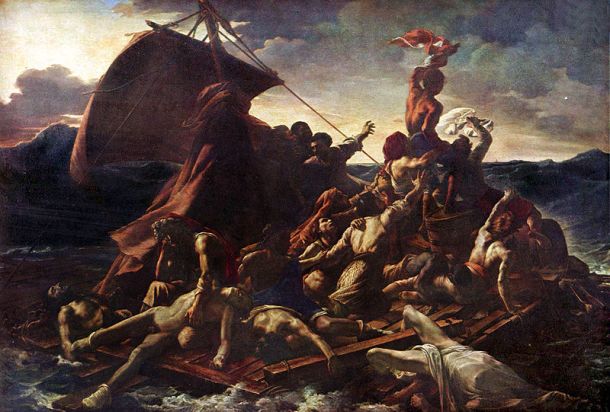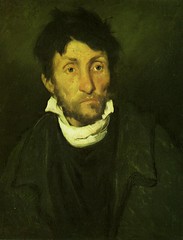Art as a black hole
March 19, 2011 3 Comments

Barnett Newman: Untitled (The void), 1946
In 2009 the BBC aired a series called School Of Saatchi. Several young artists competed in default reality tv style to win an exhibition in the Hermitage curated by art patron and advertising mogul Charles Saatchi.
One of the jurors, art critic Matthew Collings, spoke about the difficulty that the general public still had with modern art, especially with the techniques used today: ready mades, found objects, installations, video. “Get used to it, it’s here to stay”, he said.
Whenever a football coach gets the full support of the management of the club, he usually gets fired the next day.
I stopped being an artist now more than ten years ago. Apart from severe doubts about my own ability to make art with an impact, I got severe doubts about the ability of today’s art itself to make an impact. I am talking about the visual arts, the stuff that you find in museums.
I was never only in the art world. I met many well educated and intelligent people who knew nothing about art. Now that I am outside the art world, I can understand why: if you don’t actively go out to find art, it does not find you. A Dutch stand up comedian, Theo Maassen said: “I know a 1000 tunes from commercials, but I can’t quote a single philosopher”. The same goes for art: at this moment the trickle down effect of art is about zero.
I think it’s a horrible fashionable word, meme, but I’ll use it anyway. Meme: ideas or beliefs that are transmitted from one person or group of people to another. Contemporary art fails to create memes that spread outside the artworld itself.
So the problem of contemporary art is that its impact outside the artworld itself is extremely limited, and this goes against the public nature of art. There must be so many young, enthusiastic, inventive people with nice and strange ideas who start a career as artist only to find themselves marginalized in a marginalized world ten years later. And if successful, they are successful in that marginalized world.
 Part 2 in the series
Part 2 in the series 














